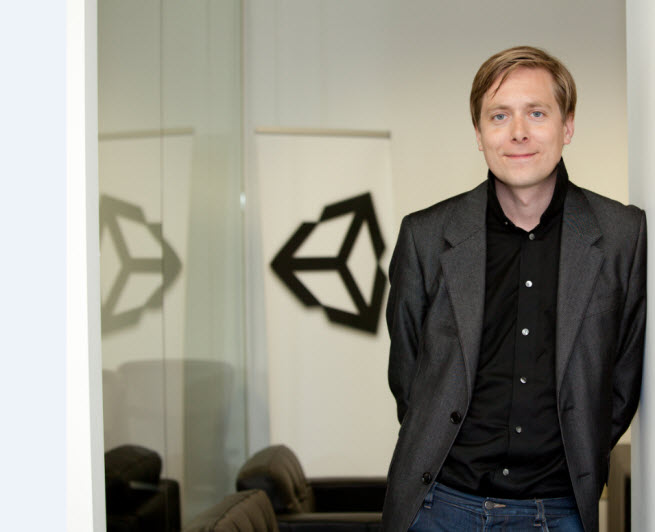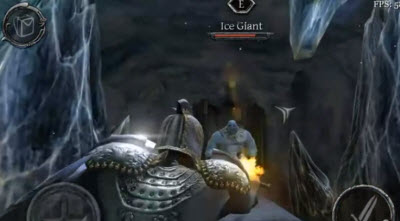 Few companies have contributed as much to the flowing of independently produced games as Unity Technologies. The maker of a 3D-graphics game development platform, Unity 3D, got its start in Copenhagen, and now it is based in San Francisco. More than 1.3 million developers are using its tools to create gee-whiz graphics in their iOS, Android, console, PC, and web-based games. Nintendo’s new Wii U console will support games built with Unity, as will the upcoming Ouya Android-based game console. The pattern here? Unity wants to be the engine for multiplatform games, period.
Few companies have contributed as much to the flowing of independently produced games as Unity Technologies. The maker of a 3D-graphics game development platform, Unity 3D, got its start in Copenhagen, and now it is based in San Francisco. More than 1.3 million developers are using its tools to create gee-whiz graphics in their iOS, Android, console, PC, and web-based games. Nintendo’s new Wii U console will support games built with Unity, as will the upcoming Ouya Android-based game console. The pattern here? Unity wants to be the engine for multiplatform games, period.
Slowly but surely, Unity has risen from the low-end to support better and better graphics, chasing after high-end PC and console engine makers such as Epic Games. David Helgason, the 34-year-old chief executive and co-founder of the company, has guided this revolution in indie games and better development tools.
More than 139 million players have installed the Unity plug-in on their web browsers since 2008, making Unity into one of the world’s biggest game platforms. Unity distributes 3D game on new platforms through its side-business Union, and it has created its own marketplace where developers sell 3D assets to each other. Here’s our edited transcript of our interview with Helgason.
GamesBeat: Tell us where you’re growing.
David Helgason: We’re firing on all cylinders. It’s kind of crazy. We’re having another year of 100 percent growth. Now we’re touching 1.2 million, maybe 1.3 million developers, of which 300,000 used Unity in the last month. The base of developers keeps growing.
 More than 30 percent of our business now comes from Asia. The Asian expansion we’ve done in the last 18 months has been incredibly successful. Japan is our second-biggest market now. Being out there, we’re doing things that we couldn’t really do from our western base.
More than 30 percent of our business now comes from Asia. The Asian expansion we’ve done in the last 18 months has been incredibly successful. Japan is our second-biggest market now. Being out there, we’re doing things that we couldn’t really do from our western base.
One of them is the Nintendo partnership, where Unity becomes the default development kit for the Wii U. When you get a Wii U dev kit, you’ll be getting a license for Unity on the Wii U from Nintendo. It’s an industry first. Someone at your site just wrote an article about the Wii U and indie games. That hammers in how much Nintendo cares about ensuring that they’re strong there. It’s quite fascinating. There’s a lot of naysayers about the Wii U. But we and many other people believe that this is a smart approach for them. They’ve opened their ecosystem up to the Unity community.
And then of course we’ve been doing all this tech stuff. Unity 4 is in beta now. We’ve seen some pretty amazing things coming out of there. Our demos look like a computer-generated movie or like a Pixar movie.
Our customers have been extremely successful. There’s always the quip that, yes, it’s easy to make games with Unity, but people aren’t making money with it. It’s been hard to challenge that. But as of a few days ago, three of the top 10-grossing games in the App Store were made with Unity, including Rovio’s Bad Piggies, CSR, and Kingdoms of Camelot from Kabam.
 GamesBeat: How do you measure success relative to some of the other guys, like Epic Games or whoever the competition is? How do you gauge whether you’re gaining ground?
GamesBeat: How do you measure success relative to some of the other guys, like Epic Games or whoever the competition is? How do you gauge whether you’re gaining ground?
Helgason: It’s more a question of whether they’re gaining ground on us in the mobile space. There’s way more top-grossing apps made with Unity than any other engine. Beyond that, there’s the long tail where we’ve done extremely well. We estimate several thousand games made with Unity in the App Store. Anybody else, we can’t count more than a couple of dozen. That’s how we measure success. We serve the long tail, and new revenue has been growing extremely fast as well.
GamesBeat: You have the Wii U now. You’re breaking into consoles. Where else are you moving into that the other guys used to be?
Helgason: Some the Kickstarters that are going on now — Wasteland 2 and Project Eternity are both Unity-based. Big PC projects. We’ve always seen the in-house engines as our biggest competitor, not necessarily any other company. You’d have used an in-house engine or Unreal or Crytek for games like these. So on the PC side we’re making a very strong moves. On the current-gen consoles, we haven’t made a lot of headway, although there are games that are on both PS3 and Xbox 360 that are done by the community and also upcoming titles by first parties. The Wii U will be the first console platform where we’re extremely early and extremely well-established. I’m not going to claim this, but I haven’t noticed anybody else announcing support for the Wii U. I have no idea for sure which companies will be there, but we will be there extremely early, and we expect a lot of wins on that platform.
We have a policy where we don’t announce anything until we’re completely certain that we’ll be there. We’ll hold off on a lot of announcements until we know exactly how it’s going to work.
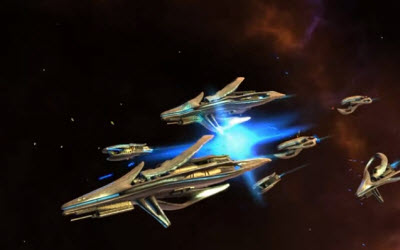 GamesBeat: You have mobile. Do you have the same share on different platforms? Are you as represented on Android as you are on iOS?
GamesBeat: You have mobile. Do you have the same share on different platforms? Are you as represented on Android as you are on iOS?
Helgason: I would guess so? Our Android revenues are lower than our iOS revenues, but we still sell close to as many licenses on Android. The original version of Temple Run was not done on Unity, but they quickly ported it to Unity and relaunched on Android. Then they did the upgraded version on iOS, also using Unity. A lot of these games are going cross-platform. By the way, we just announced Windows Phone 8 support. Shortly afterwards, a lot of people who hadn’t announced the same thing declared Windows Phone 8 support. We think we’re also going to be enabling that platform.
GamesBeat: When you guys come up with better and better stuff, what you’re trying to do is also climb up this 3D food chain. Where you can add more and more 3D features and make it easier to create different kinds of high-end effects. Are you catching up with Unreal or the CryEngine.
Helgason: Game Developer magazine published a survey May, done by Mark DeLoura. It dealt with mobile game developers specifically. The question was, which engines are you using for your mobile development? When the results came back, 53 percent self-reported using Unity. 38 percent, were using no engine, building it themselves from the ground up. A tiny percent was an open-source framework for 2D games, and then I think six percent was Corona? They’ve slid into single digits.
We think it’s the same on both console and desktop. The biggest competitors are actually internal engines. As time goes by, the need for an agile platform increases, the complexity of technology grows, and Unity gets better at a very fast clip. What we’ve seen is that it’s increasingly uneconomical and kind of senseless to be building your own engines. There are people who’ll keep doing that for a while, like the Frostbite engine at EA. We’re not going to replace those in the next year or two. But for more and more use cases, we think we’ll be replacing other engines, in particular home-built engines.
A bit less than two years ago, we looked at ourselves and saw that we were becoming fixtures on the mobile front, but we needed to be able to seal up the high end. We needed to make it so everyone has access to the technologies they need for high-end games, whether it’s a small team or a big team. We have an extremely friendly pricing structure. It’s ridiculously friendly in most cases.
We began hiring a lot of people who came from these big studios. We have people working with us now who’ve worked on the Frostbite engine, the Glacier engine at Square Enix, and so on. We’re pushing it as hard as we can, rapidly closing the gap between the very highest end that you can think of and what Unity does. That gap is not close, but it’s closing at a geometric pace.
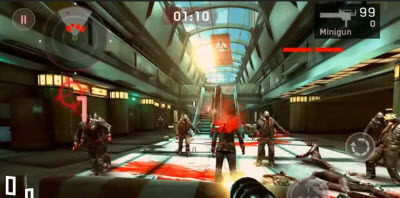 GamesBeat: Flash 11.4 seems to have made a little progress. What do you think of that development?
GamesBeat: Flash 11.4 seems to have made a little progress. What do you think of that development?
Helgason: We’re still in pre-release mode, sorting out bugs, with our Flash export. Adobe is also improving their platform, so we’ve been working with them quite closely on the engineering side. There are many limitations in Flash still, but we’ll be swatting them one by one over the next few years. Unity works quite well there. There are released games on it now. The Teenage Mutant Ninja Turtles game. A lot of small games have been built that way. Some pretty big social gaming studios are working on Unity-built and Flash-exported browser titles. That should all be coming out in the next few months. It works already, and it’s pretty sweet.
We haven’t seen the adoption we expected of it yet. I think there’s been uncertainty about the revenue share and how that’s going to work. People are starting to understand it and realize how it makes sense for their business model. We think it’s a very important part of the lineup, but one among many others. Our plugin has now been installed on 150 million machines, and we have a deal with Qihoo in China where they are working on installing it on a very large number, hundreds of millions of machines, to make that base even broader. We think our browser plugin is more relevant than ever.
Stand-alone apps for Mac and PC are kind of resurgent, though. There was a period when if it wasn’t in the browser, it didn’t matter. Now it’s more and more clear that stand-alone applications, clients for MMOs and things like that, and also smaller games sold through Steam and the Mac App Store and the upcoming Windows software store, are resurging. Once you’ve installed on a user’s machine and you have an icon on the desktop, that’s a very sticky place to be. People are realizing that running off to the web wasn’t necessarily sustainable for everyone.
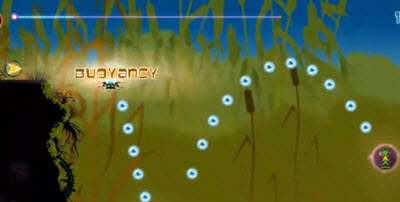 GamesBeat: Mixamo was telling me they had an announcement coming up with you.
GamesBeat: Mixamo was telling me they had an announcement coming up with you.
Helgason: They have this pretty cool technology that’s not exactly bundled in Unity, but you can get access to it through Unity. You can animate any character in a really flexible way. It combines well with our new animation system, which makes it extremely easy to retarget animation coming from any source, including Mixamo. We demoed it in that keynote we did. It’s a money shot for people who know something about character animation. You can take a particular complex movement and apply it to a character with very non-standard geometry — in our case it’s a big teddy bear — and have it move in a realistic way without having to craft original animation for it. Mixamo has a huge library of animation. They’re keeping their relationship with us and making it even easier for people who may not have animators on staff to have access to a lot of complex character animation.
This is the whole drive of Unity, to take all these hard things and make it flexible enough for the really big companies, and make it easy enough for individuals to use. It’s a complex design problem and it calls for more work than doing something that’s just high-end or just very simple. But that’s the beauty of Unity.
 GamesBeat: What do you think about whether 3D or 2D is going to become the biggest on mobile?
GamesBeat: What do you think about whether 3D or 2D is going to become the biggest on mobile?
Helgason: I think it’s a mix. If you look at the top-grossing games, the ones that are made with Unity, two of them are 2D and one is 3D. If you look at the rest it’s also a nice mix. So I don’t think it’s either-or. Many games that look 2D are actually built in a 3D manner, too. There’s a lot of things like parallax effects that are easier to do in a 3D space. You just have to place the camera so it looks right. There’s some pretty amazing stuff coming out built like that.
The drastic fall of Zynga on Facebook is showing that their way of building games — not focusing on anything but 2D in a very simplistic world — is not necessarily sustainable. People do lose interest in it over time. Most of the social games companies… Some of them are adopting Unity just for personal projects. Others are actively shifting towards it in a big way. They like the flexibility of being able to mix and match.
Unity still has its weaknesses. It’s not perfect for 2D. But it’s gotten a lot better in the last couple of years. The community has built some amazing extensions for Unity that make it easy to work with a mix of 2D and 3D or even pure 2D. We’re also working in that direction. 2D is kind of a subset of 3D. You just place planes in front of the camera. Once you start working like that, there’s a lot of interesting opportunities that arise. I think at least half the games that are made with Unity, at least on mobile, are fundamentally or mostly 2D.
 GamesBeat: How many employees do you have? Have you talked about revenues at all?
GamesBeat: How many employees do you have? Have you talked about revenues at all?
Helgason: We’re 210 people now. The only thing we’re saying about revenue is that we’re significantly profitable. We opened up some new offices, including some very strong local offices in Seoul, Tokyo, and Shanghai. We’re working very closely with companies there. We’re very proud of having a global company, where the leader of our Shanghai office speaks perfect Chinese, he’s from there, he knows everybody. He can go and talk to the studios on their terms and understand their problems. Today, in mobile, a third of our revenue is coming from Asia. The rest is split between the U.S. and Europe.
VentureBeat's mission is to be a digital town square for technical decision-makers to gain knowledge about transformative enterprise technology and transact. Learn More
